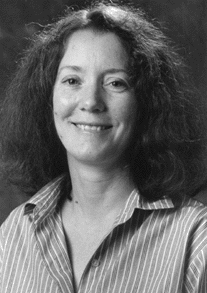
 A pioneering magazine turns
50
A pioneering magazine turns
50
An experiment at Johns Hopkins turns 50 years old next month, and
the people who've conducted it, past and present, will honor the
occasion with a special celebration.
In April of 1950, Hopkins graduate Corbin
Gwaltney pulled the last $100 out of his savings to bet on a new
idea. He had a crazy concept for a different approach to alumni
magazines, an idea that he was convinced could work for his alma
mater and make the resulting publication a more genuinely
interesting and stimulating experience for its readers.
Gwaltney's idea, according to current Johns
Hopkins Magazine editor Sue De Pasquale, was to expand the
magazine's focus beyond the alumni statistics and alumni news
items dominant at the time in alumni magazines.
Full story...
 Building the right barrier stops spread of
deadly pollutants
Building the right barrier stops spread of
deadly pollutants
Underground water, tainted with toxic chemicals, is on the move.
How do you stop the contaminants from polluting nearby wells? One
new method is to throw a barrier of iron filings in front of the
deadly flow. In theory, as the water passes through this wall,
the pollutants will react chemically with the iron, leaving only
harmless compounds in the water.
This permeable reactive barrier technology, in
use for less than a decade, promises to be a highly effective
pollution control tool. But environmental engineers at Johns
Hopkins have found that cleanup crews may be making crucial
miscalculations in designing these pollution neutralizing walls.
To correct this problem, researchers William A. Arnold and A.
Lynn Roberts have prepared a new mathematical model that should
lead to safer and more cost-effective barriers. They presented
their findings March 26 at the national meeting of the American
Chemical Society, in San Francisco.
Full story...
| [ The Gazette | Search | About the Gazette | Send us Email ] |
The Gazette
 The Johns Hopkins University
The Johns Hopkins University
 Suite 100
Suite 100

3003 North Charles Street
 Baltimore, Maryland 21218
Baltimore, Maryland 21218
 (410) 516-8514
(410) 516-8514  gazette@resource.ca.jhu.edu.
gazette@resource.ca.jhu.edu.
